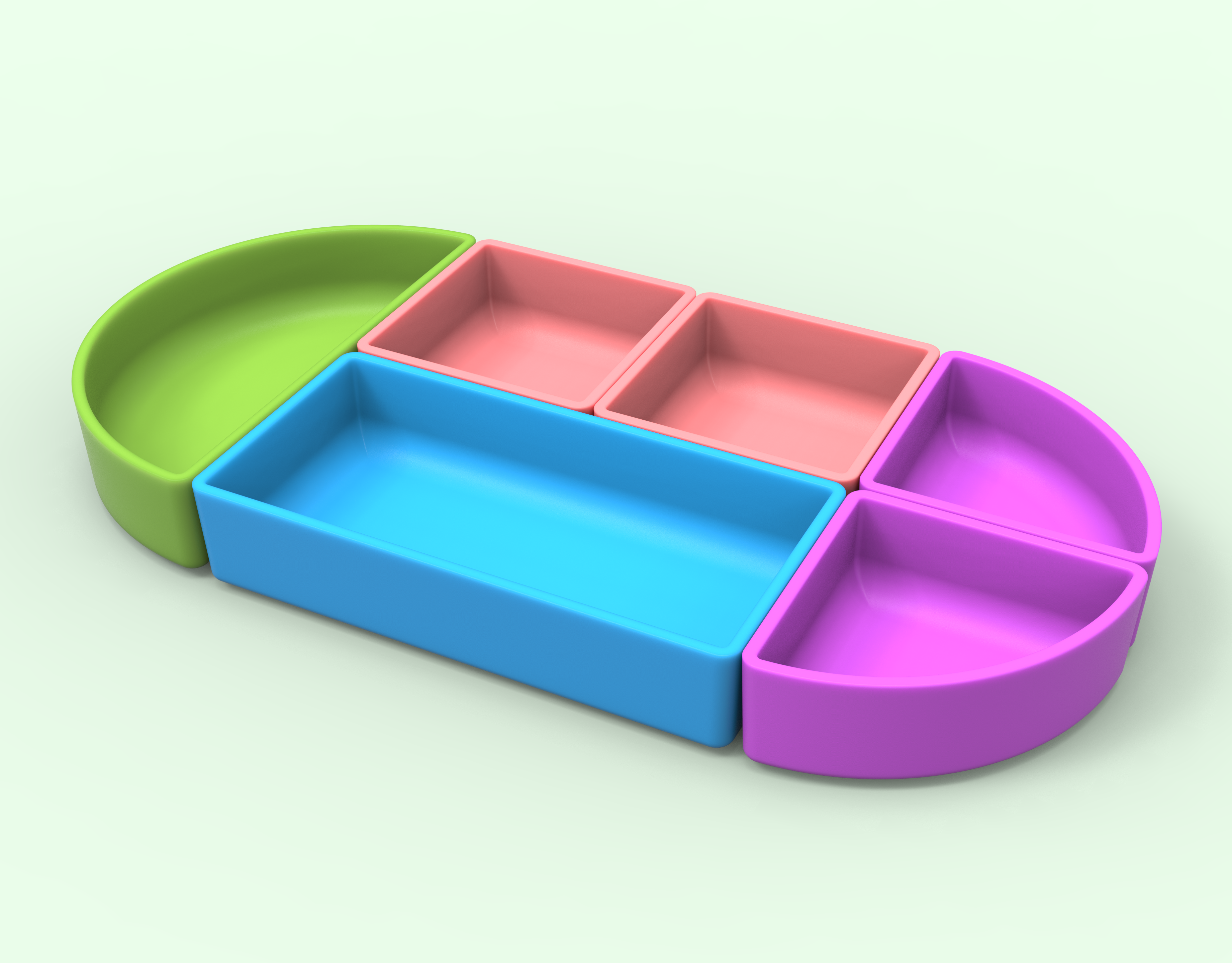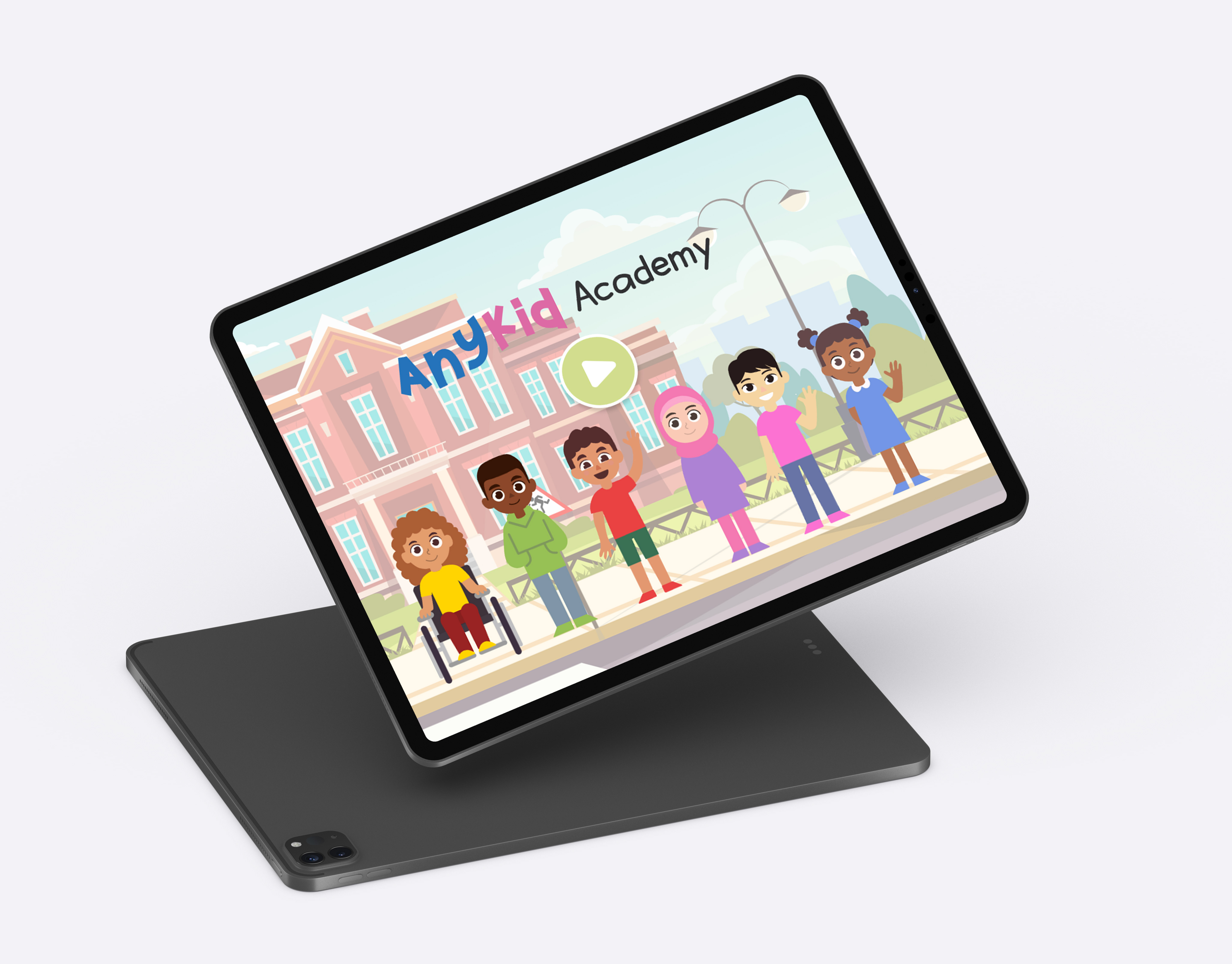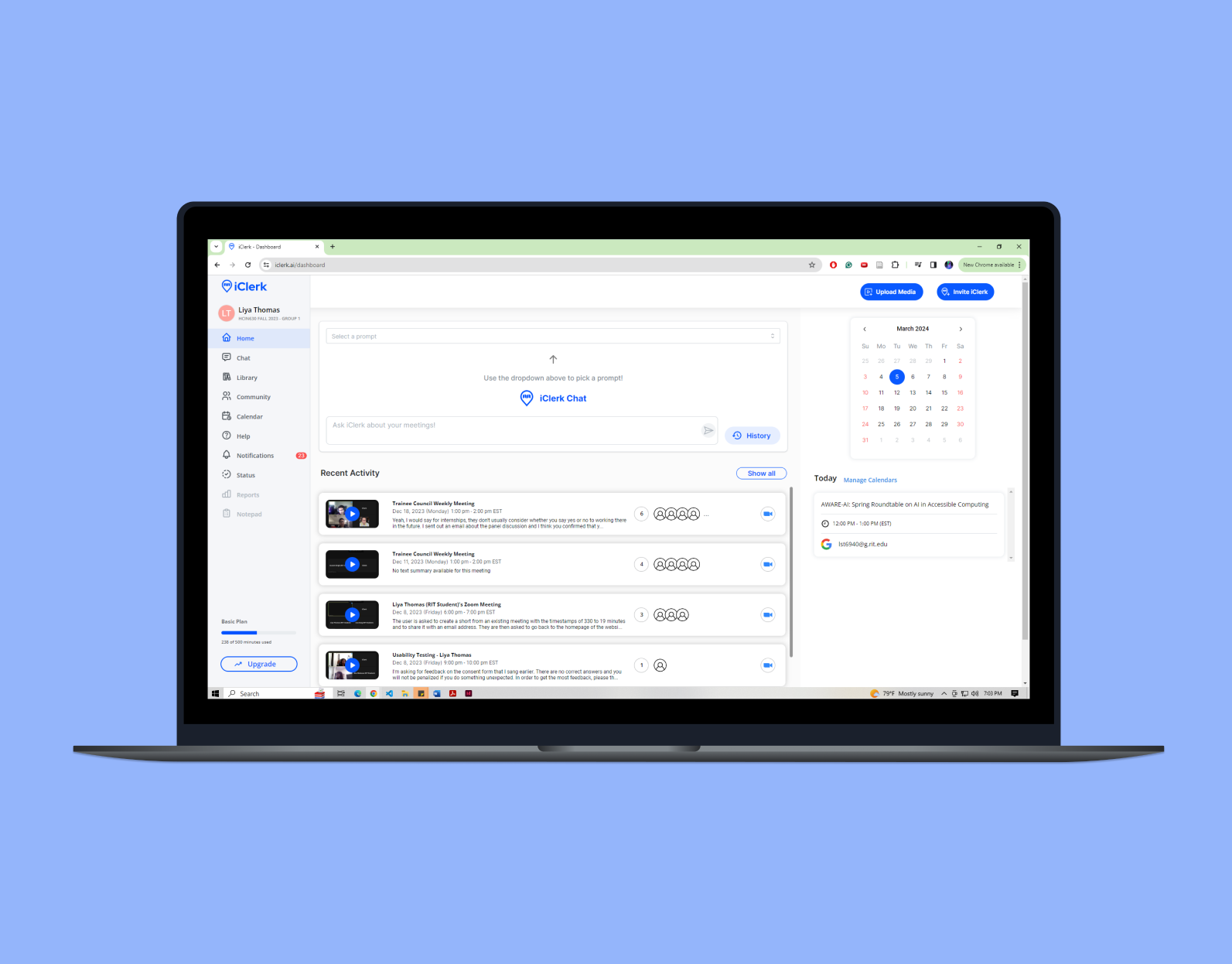An app for college campuses that allows individuals with excess or old materials to list them for sale. Other students can then purchase these supplies, providing a convenient way to recycle goods within the campus community.
Timeline: February 2023 - April 2023
Team: Liya Thomas, Ya Hsuan Yang, Priyadharshini Gopalakrishnan
My Role: UX Research, Conducting Interviews, Analyzing Data, UI/UX Design
Project Introduction
Problem:
The average college in the US produces about 562,442 tons of waste a year. A portion of this waste comes from school supplies, materials, and textbooks, most of which can be reused by other students. The audience for the project was RIT students, teachers, and campus groups.
Research Questions:
What do students, teachers, and campus groups tend to do with their old materials?
Research Goals:
• Discover situations in which materials from students, teachers, and campus groups can be reused.
• Create a mobile app to help students, teachers, and campus groups sell and buy old materials.
Methods
Contextual Inquiry:
Included semi-structured interviews and observations of the spaces or materials a participant has to show. There were a total of 10 interviews conducted; 7 interviews with students, 2 interviews with campus labs, and 1 interview with a professor.
Interview Summaries:
Disclaimer: not all interview summaries have been provided here
Student 2: Undergrad student, Industrial Design
Students store scrap materials from class projects in a box. Other students can then take the materials and use them for free. Large scrap materials are kept in the larger box (Figure 1) and the smaller materials are in the medium box (Figure 2). Other materials that cannot be reused, will be trashed.
Student 6: Undergrad, Web and Mobile Computing
The student has many books and course materials from the previous semester. She has been storing her books to lend or give to someone who requires the books and materials (Figure 3).
Professor 1: HCIN 722 Professor
The professor requires each student to have a beginner Arduino kit (Figure 4). The kit can be bought in class for $88. Some students can borrow Arduino kits from previous students. The professor does not mind current students borrowing Arduino kits from previous students, as long as all the parts are working.
Campus Lab 1: The Construct @ RIT
The first area of the lab has various woodworking tools and is most known for the laser cutters. Scrap materials are left on a cart that students can access and use for future laser cuts (Figure 5).
The second part of the lab focuses on 3D printing. All failed or unwanted 3D prints are kept on display to remind students to be mindful of the waste created by 3D printing (Figure 6).
The final part of the lab holds classes to teach students how to take apart old electronics and use the electrical parts (Figure 7). The used parts are then stored in drawers and can be used by students freely (Figure 8).
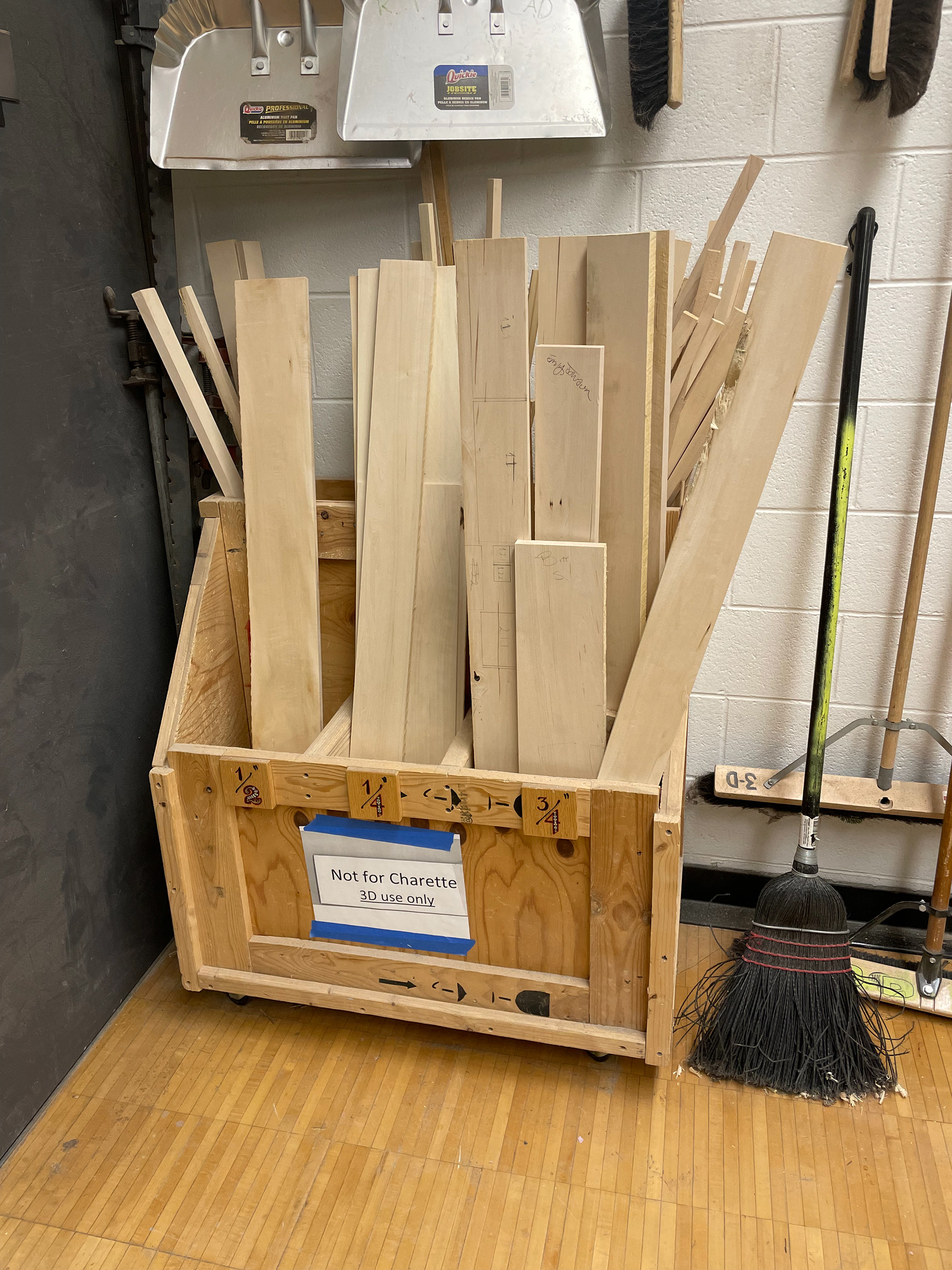
Figure 1: Big Box
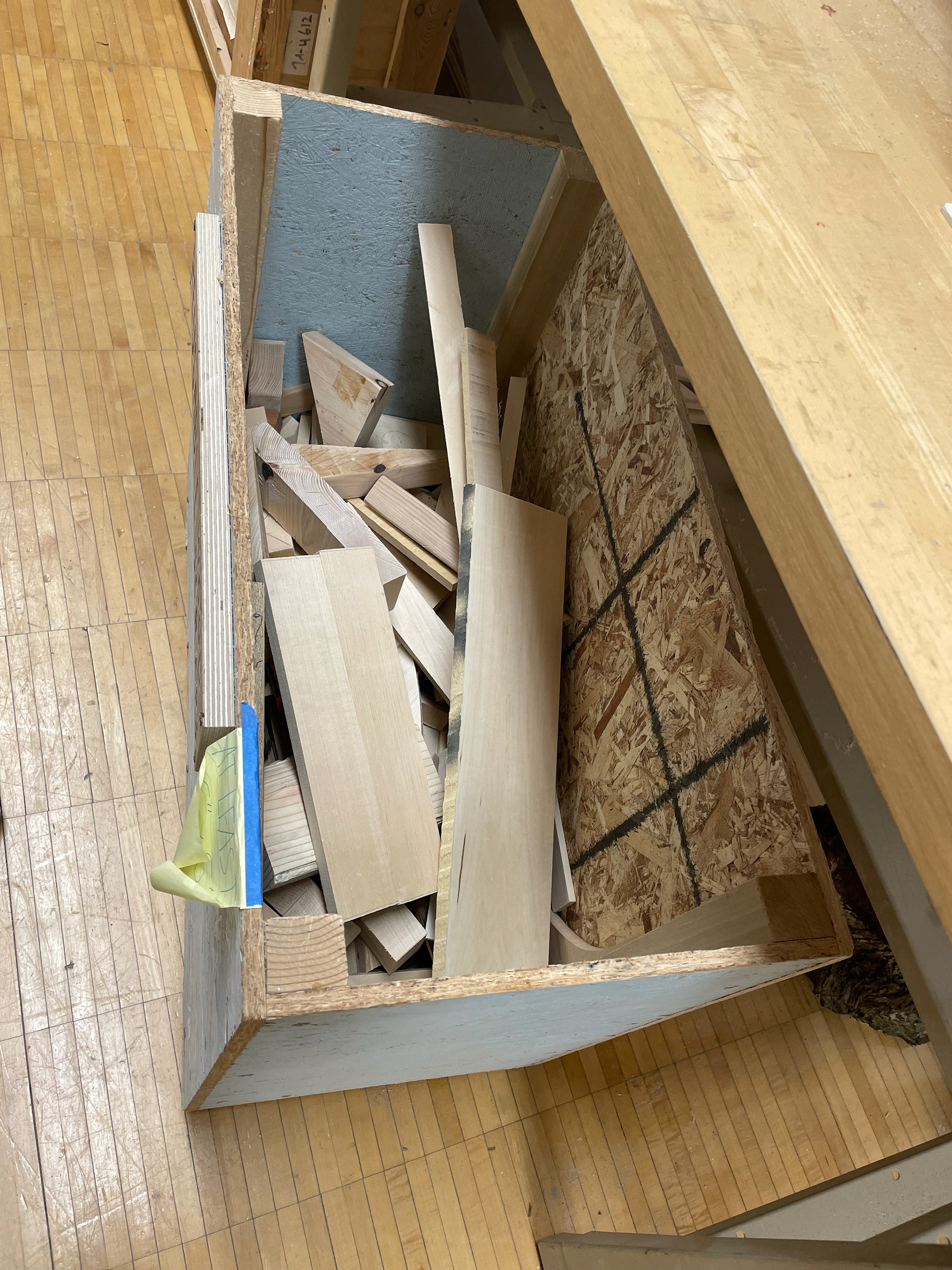
Figure 2: Medium Box
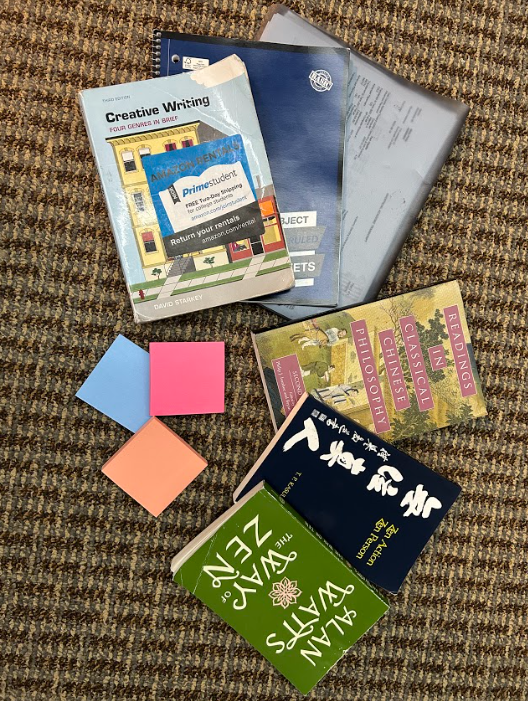
Figure 3: Books from the previous semester
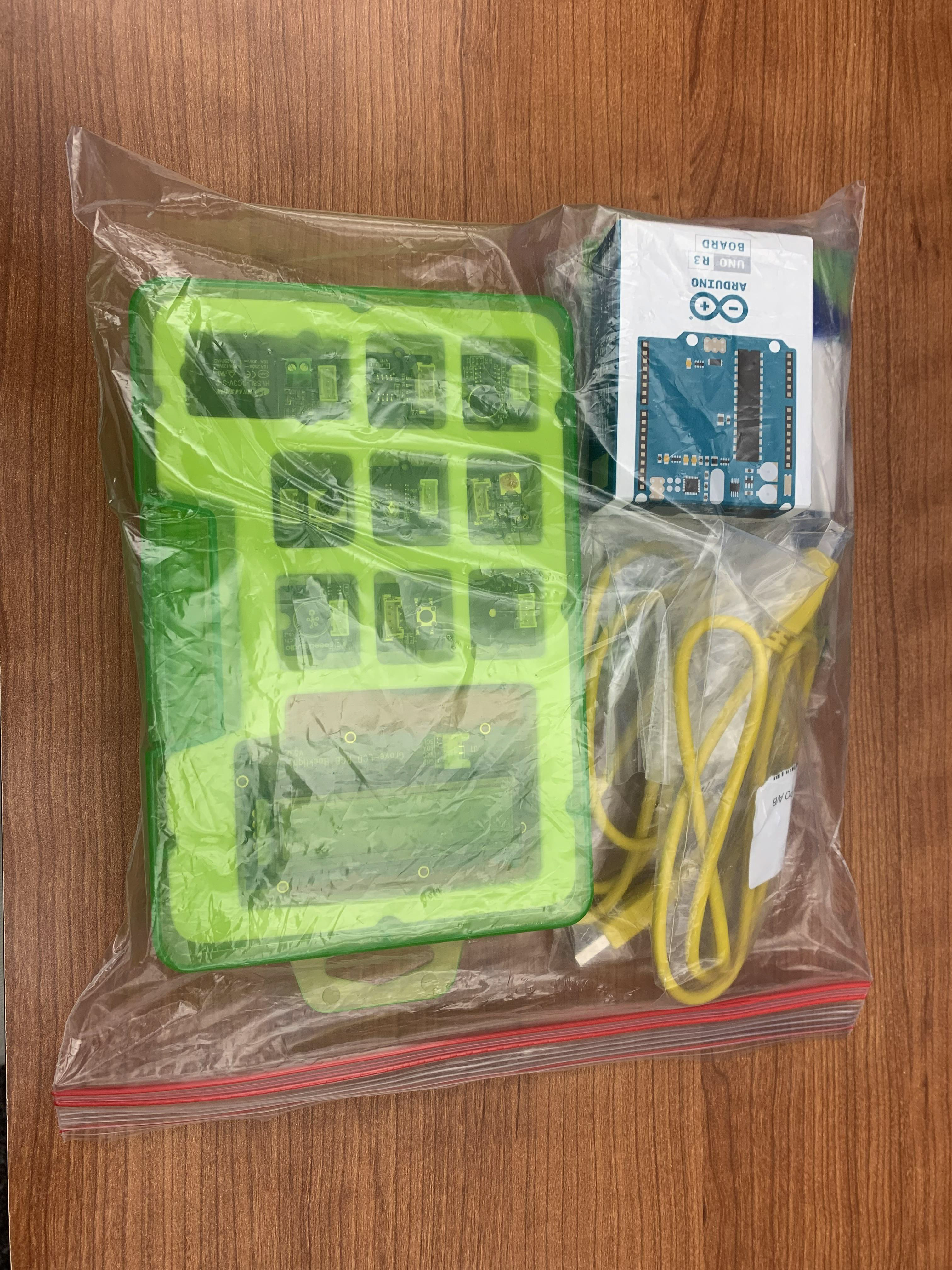
Figure 4: Arduino Kit
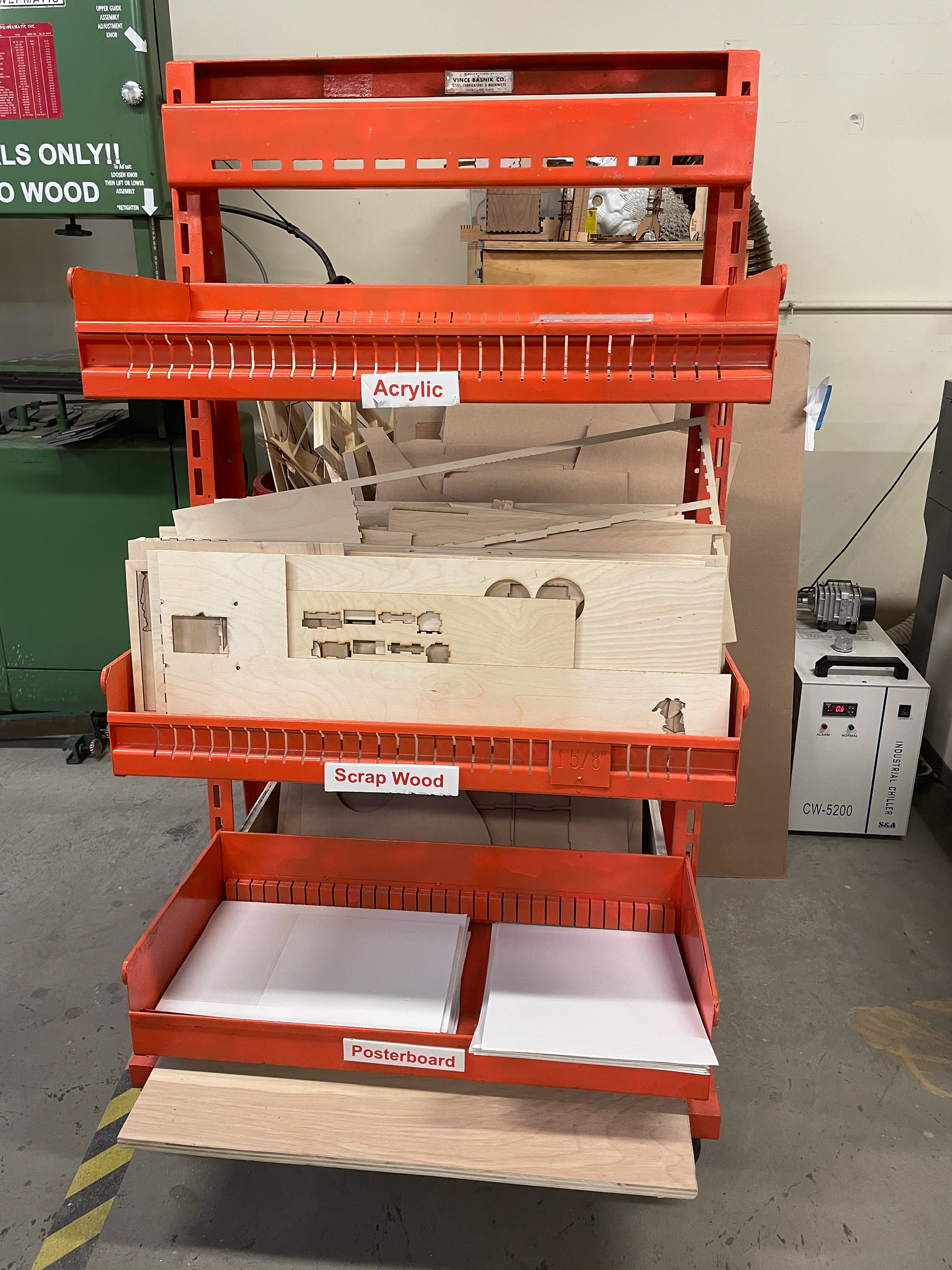
Figure 5: Cart with used materials
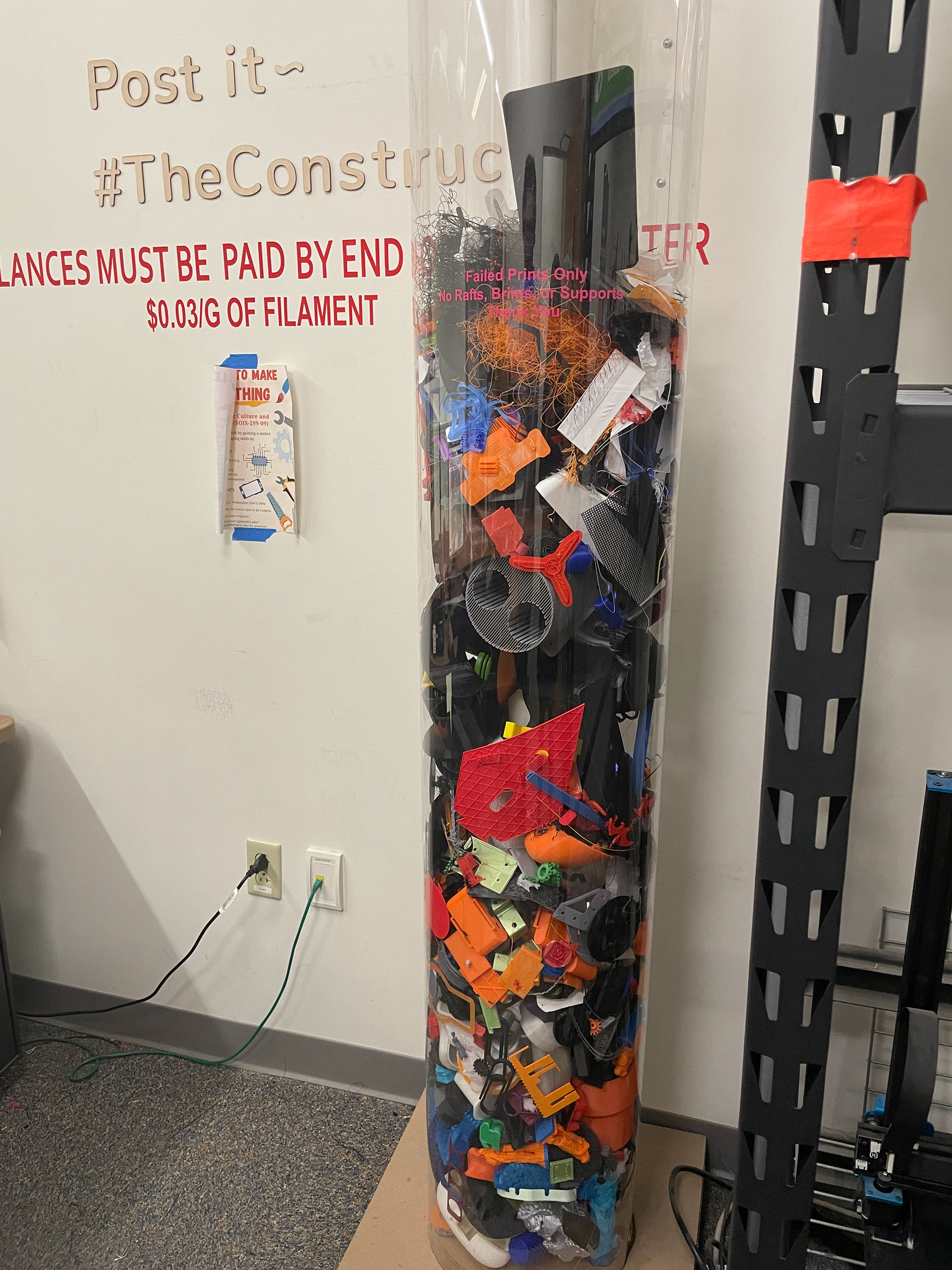
Figure 6: Failed 3D prints
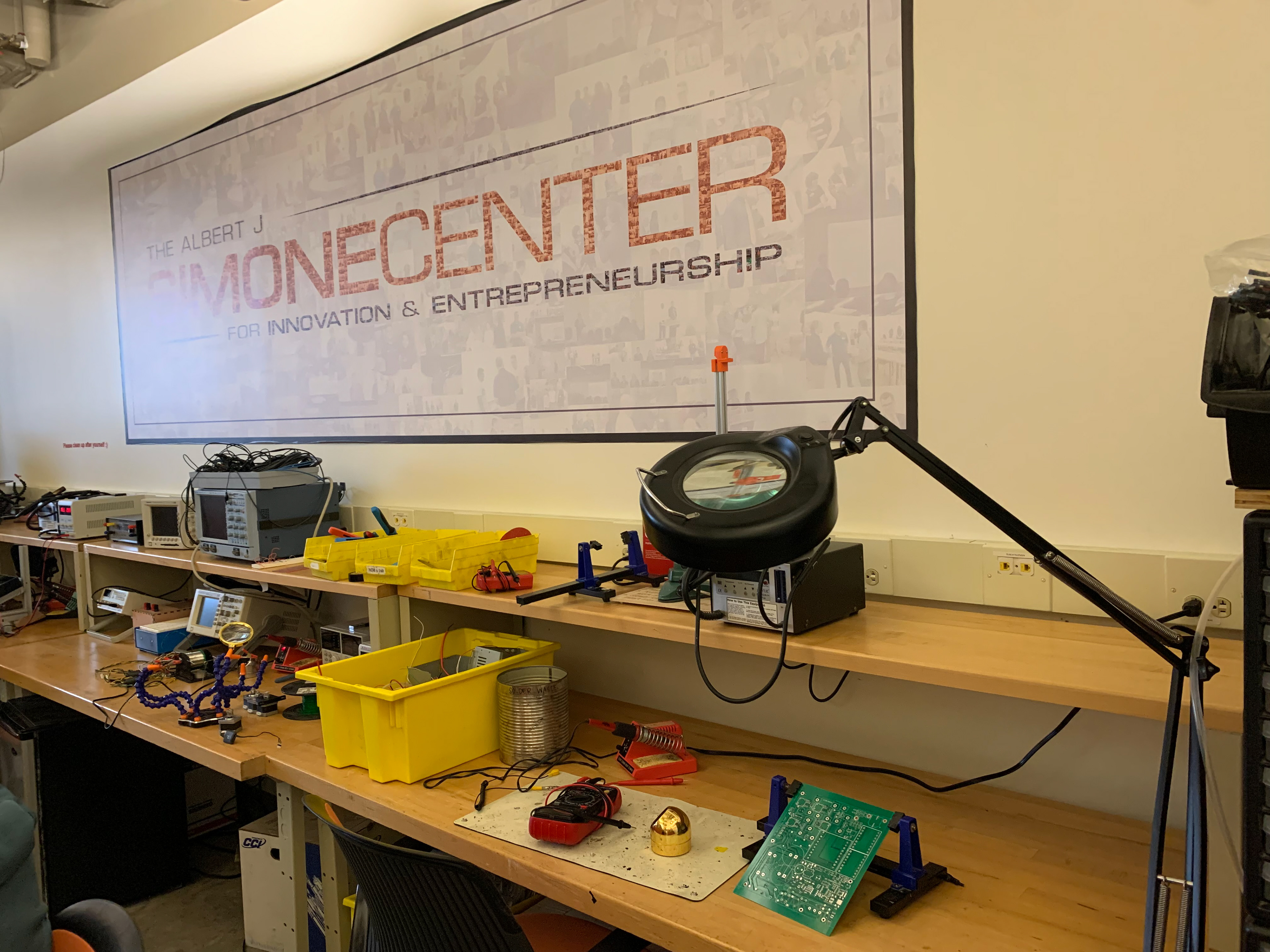
Figure 7: Used electrical devices
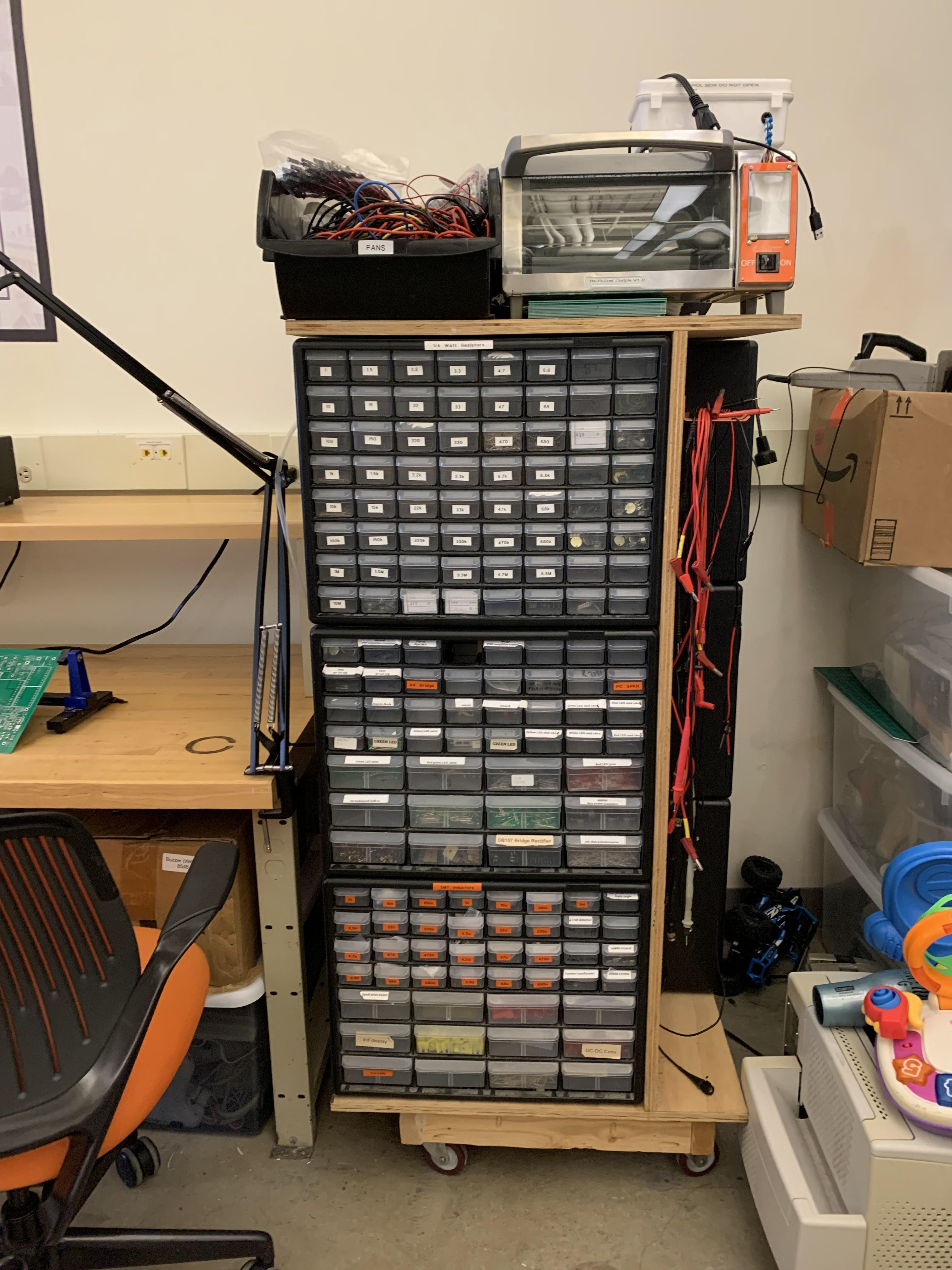
Figure 8: Drawer for electrical parts
Data Analysis
Affinity Diagrams:
Using Miro, contents from the interviews were grouped based on similar components into a local affinity diagram and then a high-affinity diagram and discovered four pain points.
Top 4 Findings:
1. There are many groups on campus with excess scrap materials, but students do not know of them.
2. Students cannot attain used materials from seniors who have previously taken the same class unless they know them personally.
3. Students tend to hold on to used materials until they find someone to give them to, and often they do not know to whom they can give their materials.
4. Campus groups, classes, and students all follow different rules when it comes to deeming what materials are considered reusable.
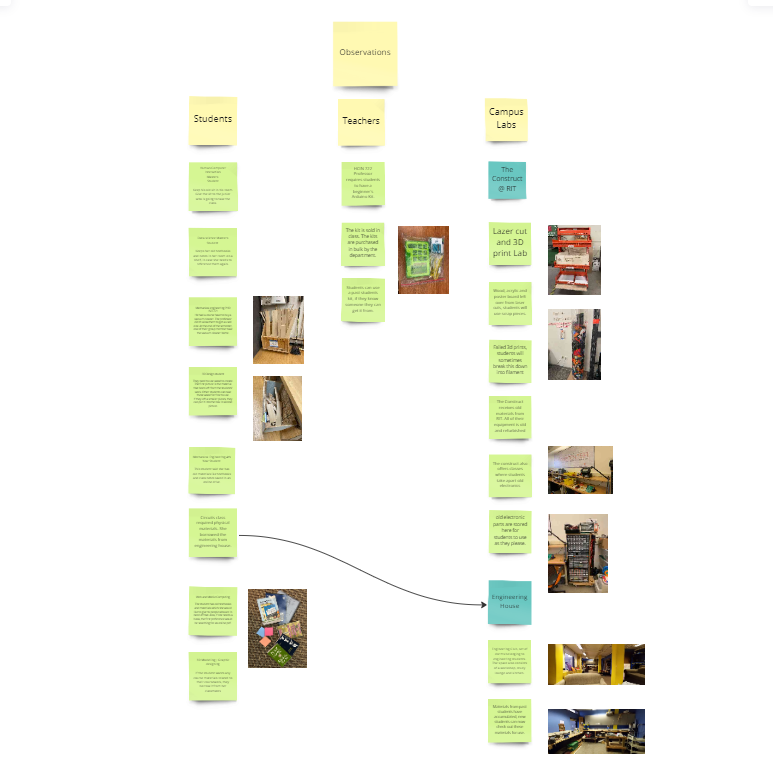
Interview Summaries

Interview Breakdown
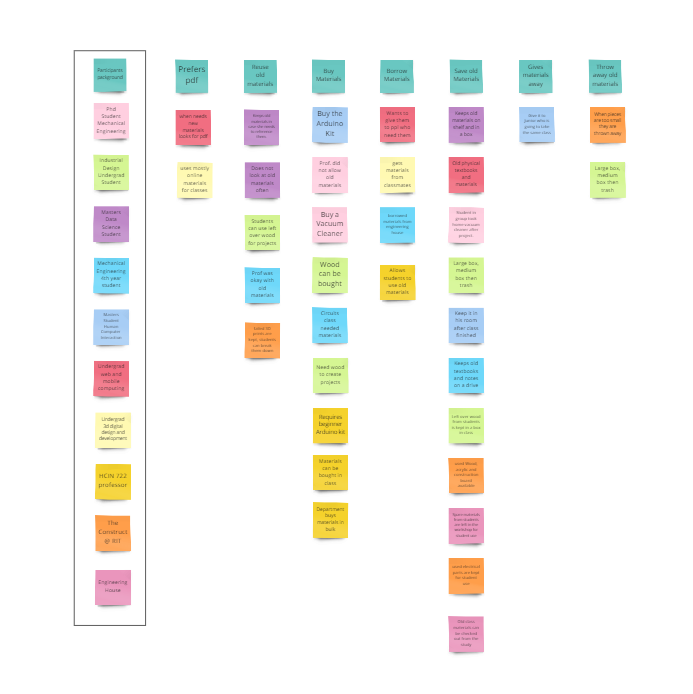
Local Affinity Diagram
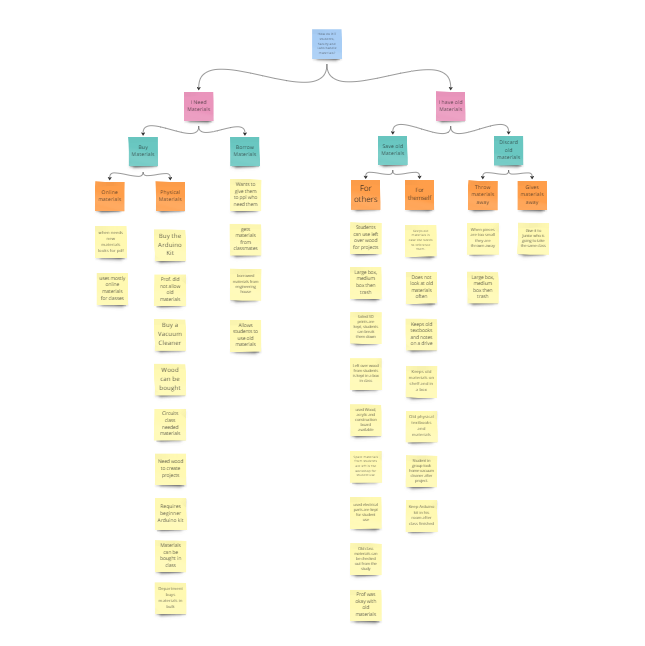
High-Affinity Diagram
Personas
Four individuals were created to represent each of our stakeholders; students, professors, and campus groups.
Primary Persona: Megan, a student who needs materials for her class
Primary Persona: Tyler, a student would like to get rid of their old class materials
Secondary Persona: Mr. Hill, a professor, would like to find materials for all students in his class.
Secondary Persona: Mr. Kunnath, a lab manager, is an active recycler who would like to encourage students to also recycle and reuse.
Prototyping
The findings from the data analysis were used to create a mobile app that allows users to sell and purchase used or excess materials.
Workflow Chart:
The prototyping process began with a workflow chart for the application. The app would be navigated and used differently based on the three types of stakeholders: students, professors, and campus groups.
Students: Can sell and buy used materials
Professors: Can sell and direct students to the app to purchase materials
Campus groups: Can sell excess materials
Scenarios:
Four scenarios were created to show how each persona would interact with the mobile application.
Scenario 1: Megan is a student who wants to get the materials at a cheaper price, she uses the app to find some recycled materials from a campus group.
Scenario 2: Tyler is a student who wants to sell his used materials and books, he uses the app to post his used items and find students to purchase them.
Scenario 3: Mr. Hill is a professor who allows his student to use used materials for his class, he uses the app to post a checklist to show the required materials for his class. Students use the checklist when looking at listings on the app to ensure they get all the needed materials.
Scenario 4: Mr. Kunnath is a lab manager who collects used materials and encourages students to reuse them. He posts the materials on the application to let students know what materials are available at the lab. Students use the app to see what services and materials are available at the lab.
Low Fidelity Prototype:
The app with have a set-up page where users pick what category they belong to. The profile page will be different for campus groups because they will have a section where they can showcase the services they offer.
From a listing page, users can either message the seller to buy the item or they can 'heart' it to add it to their wish list.
Professors will be able to add new classes to their profiles where they can list required course materials. All users can use make listings to sell or give away their items. The home page allows users to see listing updates from profiles they follow. The browse page will contain sections like colleges and departments, campus groups, and sales which all showcase listings.
High Fidelity Prototype:
The final app design was created using Figma.
